GamesRadar+ Verdict
The WD Black SN770M is one of the more expensive Steam Deck SSD options out there, but that's arguably worth it alone for a reliable brand name. With up to 2TB drives available, this 2230 drive could help you take just as many games on the go as your full size PC, whether you're rocking Valve's handheld or something like the Asus ROG Ally.
Pros
- +
Chonky capacity
- +
Right size for Steam Deck
- +
Compatible with any 2230 supported devices
Cons
- -
Pricey
- -
Steam Deck won't use Gen 4 speeds
- -
Installation isn't straight forward
Why you can trust GamesRadar+
If you told me two years ago that in 2024 I’d be using a WD Black SN770M as a Steam Deck SSD replacement I’d probably have rolled my eyes furiously into the back of my head. I mean, sure, I’m definitely the kind of player who fills gaming handhelds and PCs to the brim with games then acts surprised when I get slapped with an out of storage message, but I was convinced 512GB was more than enough space. Not only is that nowhere near enough room to take all my favorite adventures on the go, but the SN770M has effectively solved my portable drive dilemmas.
Before we dive in, it’s worth expanding on why the WD Black SN770M is considered to be a Steam Deck SSD upgrade option. The answer to that can be found within the best gaming handheld contender’s innards, as the device uses a M.2 2230 NVMe slot. Technically, you could slot a longer gaming SSD into the interface, but ultimately, there’s only room for 22 x 30mm drives inside the portable PC, hence the name.
Of course, the WD Black SN770M isn’t solely a Steam Deck SSD, and it’ll fit in any device with support for an M.2 2230 drive. That includes other handhelds like the Asus ROG Ally, and I’d argue this option will benefit those of you with that portable powerhouse since it supports PCIe Gen 4. However, that’s not to say ramping capacity up to 2TB isn’t worth it for Deck owners, given that you can stomach the price of modern, chonky storage.
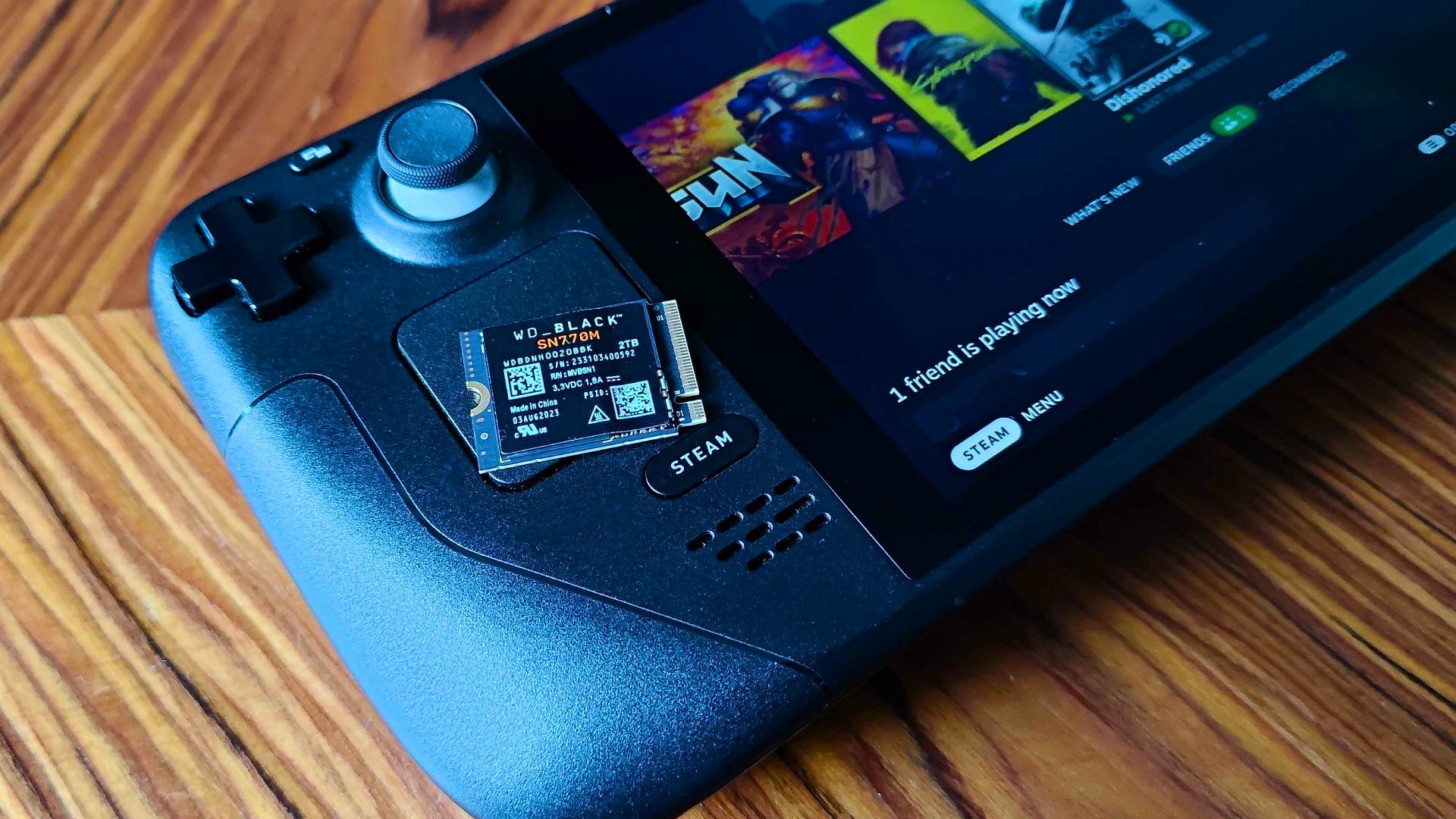
Specs and price
On paper, the WD Black SN770M is definitely more than just a Steam Deck SSD. The fact it’s a PCIe Gen 4 drive means it can reach read speeds up to 5,150mbps, just like the full size SN770. Naturally, there are faster candidates out there, but you’re going to struggle finding a 2230 option that can keep up with something like the Samsung 990 Pro. This isn’t really important when it comes to Valve’s handheld, but if you’re reading this and looking to upgrade a gaming laptop with speedy storage support, it’s worth keeping in mind.
As for capacity, the WD Black SN770M comes in 1TB and 2TB flavors. At full price, each will set you back $129.99 and $219.99 respectively, but both seem to be readily available for $20 less at the likes of Best Buy. This is important, as compelling alternatives like the Sabrent Rocket fall within that same price bracket, so implementing a discount helps prevent price from becoming a pitfall.
Speaking of rivals, while you’ll find plenty of cheaper drives out there, the WD Black SN770M both has a reliable brand name on its side and a five-year warranty. Not that you should ever want to make use of the latter, as I’m sure most of you would rather not venture inside your Steam Deck more than once. Still, it adds a level of consumer confidence that you won’t necessarily get with cheap SSDs, even if they come in at a bit less.
Design
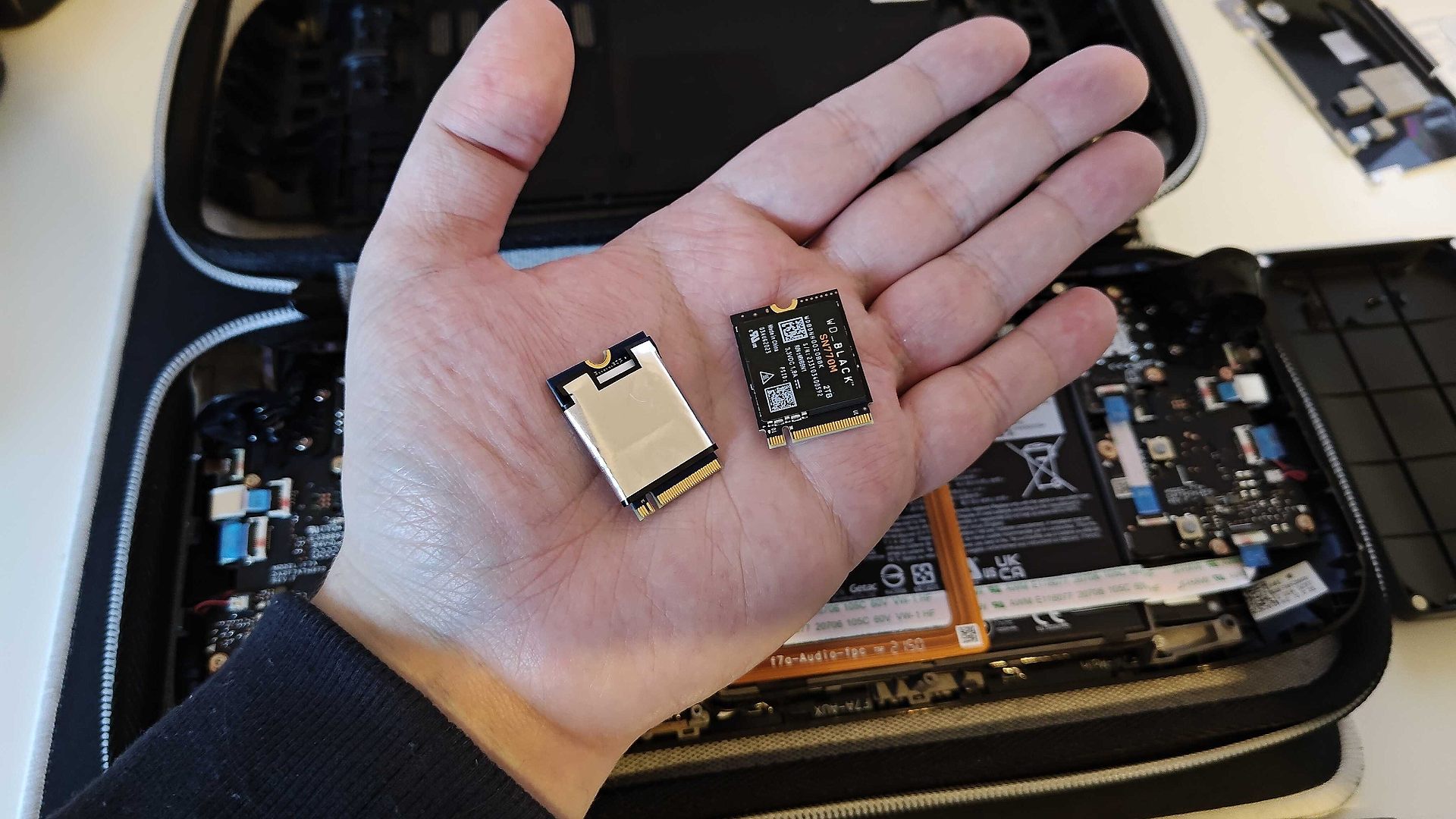
Less is absolutely more when it comes to Steam Deck SSD design, and the WD Black SN770M thankfully understands the assignment. For the whole process to work, the drive has to be practically the same as the one already inside the handheld, as installing is effectively a straight swap That means no extra heatsink material or extra gubbins attached, as you’ll have to re-use a foil sleeve that’s fitted to Valve’s original part.
For context, upgrading your Steam Deck SSD requires cracking open the back case, removing shielding that protects the drive and the handheld's battery, then swapping out the original SSD. I wouldn't say the process is impossibly difficult, but it's certainly not as simple as popping in a microSD card, as everything fits together pretty tight. Making sure everything fits together exactly how you found it is vital to success, and even the slightest variance could cause big issues with re-assembly. Thankfully, the SN770M measures up the exact same as the original drive, thus dodging issues.
For that reason, I’m also glad that this is just a straight up 2230 M.2 SSD. Technically, if the Steam Deck used something slightly different, that’d be an L on Valve’s part rather than Western Digital’s. Nevertheless, the non-proprietary nature of this drive means that if you switch to a different handheld, or even just want to install it in a regular PC, you’ll be able to do so without any compatibility issues.
As for build quality, SN770M feels relatively solid, which helped take some of the pressure off during installation. Not that I’ve ever really used a solid state drive that gives flimsy vibes, but the last thing you want is the sensation of something bending when fitting a component into place.
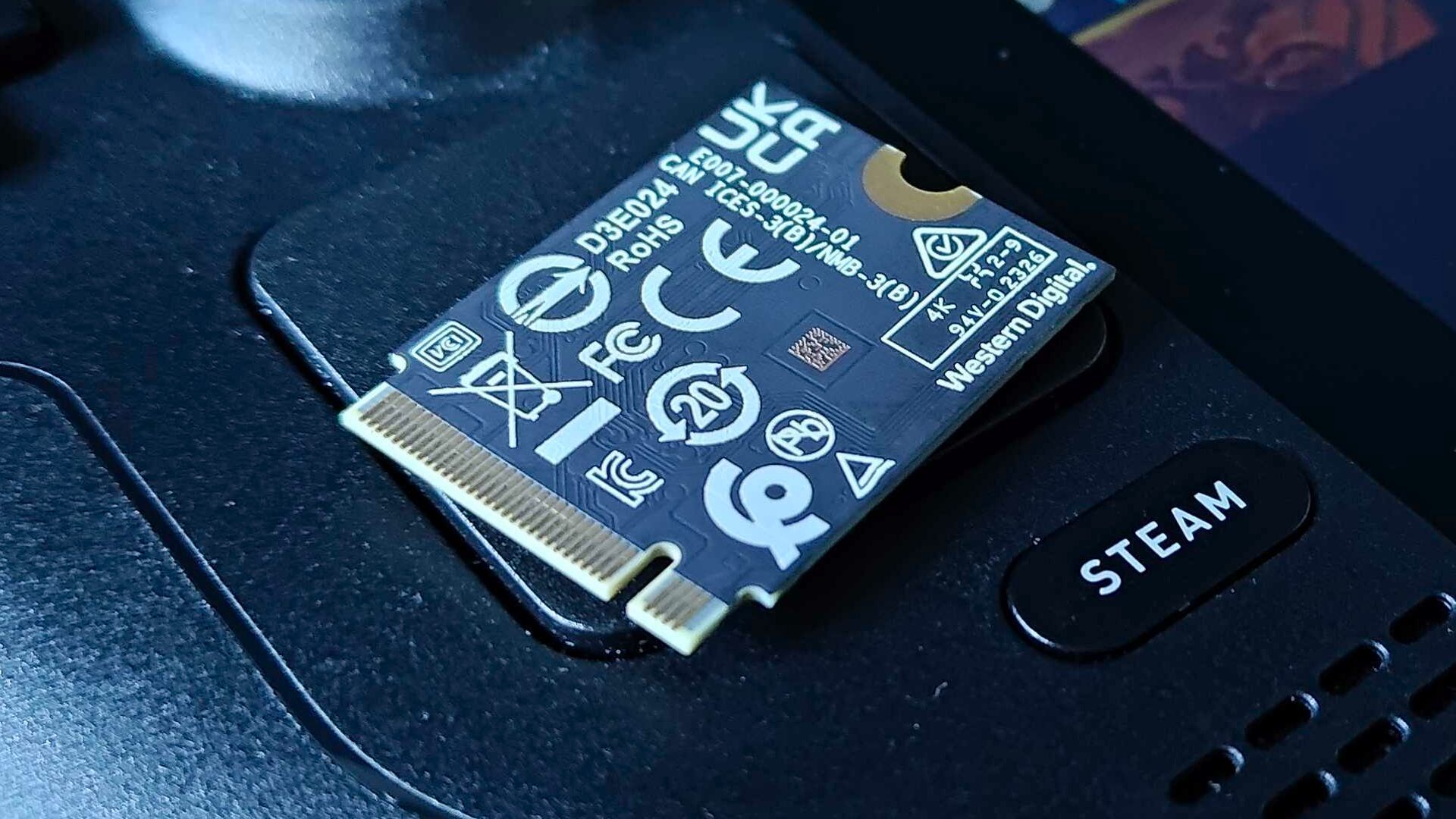
Features
SSDs aren’t really made to be feature packed, and the WD Black SN770M really just does whatever its host device can do. For example, if you pop it in a Steam Deck, it should theoretically provide you with top end speeds that fall within PCIe Gen 3 standards. Give it to the Asus ROG Ally, and you’ll be able to take full advantage of faster Gen 4 speeds just like its included drive. Every M.2 drive benefits from this same versatility, but the SN770M brings the convenience to a more compact form factor.
One thing I’ve been pondering is whether the WD Black SN770M could have done more to aid with the Steam Deck side of things. You won’t find the handheld’s name anywhere on the box, so it makes sense that the company isn’t directly catering to Valve’s portable device. However, I reckon including the little foil sleeve required inside the Deck would have been a nice touch, just on the off chance that someone damages the original or would rather leave it slipped on the default drive.
Handheld specifics aside, it’s worth noting that the SN770M boasts Microsoft’s DirectStorage support. That means if you pair it with a Windows PC, you’ll be able to benefit from faster load times using the API. This perk also got me thinking about whether the drive could actually serve as an Xbox Series X expansion card alternative, as 2230 adapters exist if you fancy taking a crack at making your own version. That said, I have yet to actually try this out myself, so it’s worth looking further into whether pairing smaller drives with a Expansion Card shell actually works.
Performance
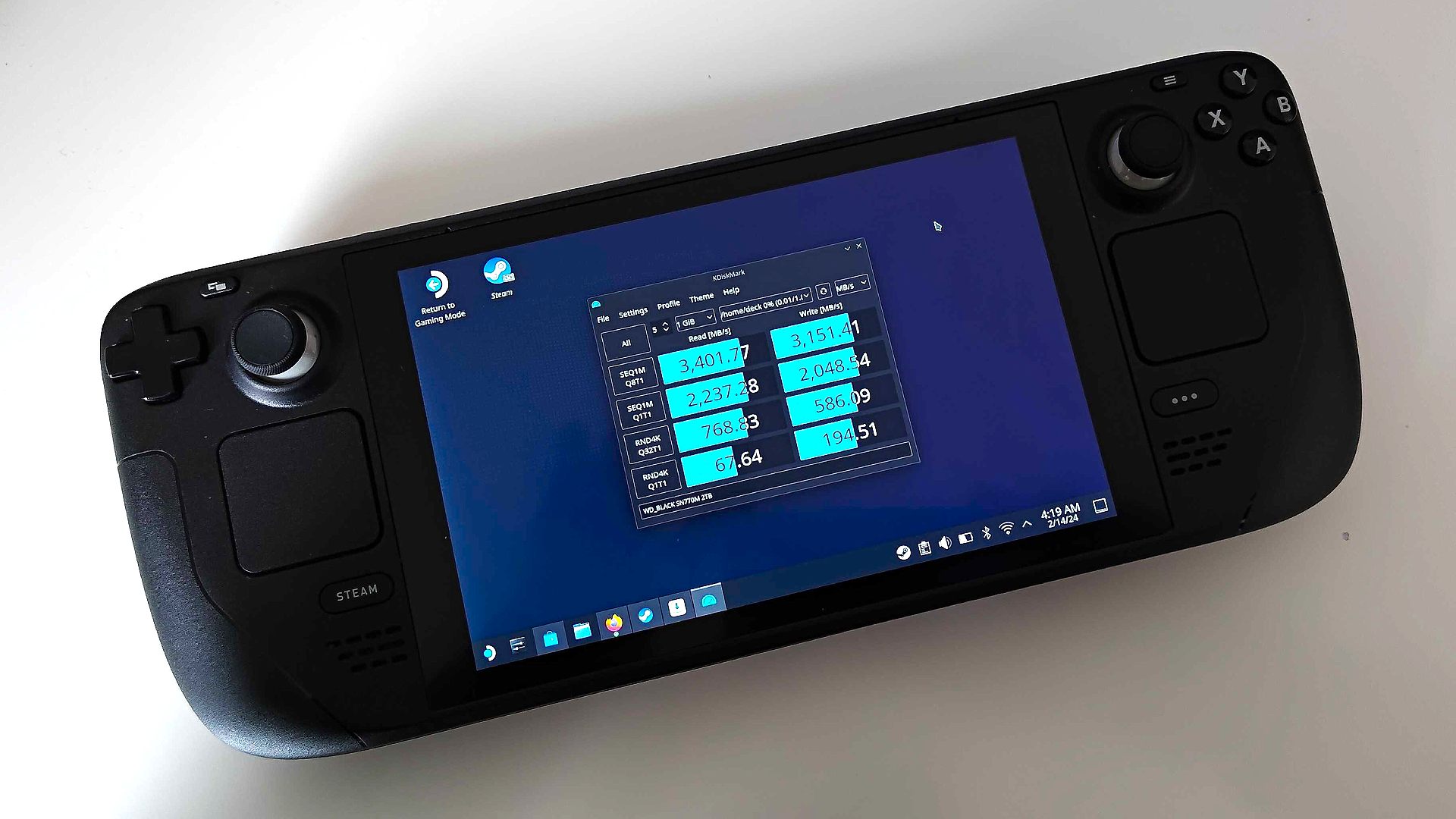
To measure WD Black SN770M performance, I decided to check whether it could reach the same PCIe 3 Gen 3 speeds as the original Steam Deck SSD. Using KDiskMark, I was able to reach read speeds of 3,401.77 MB/s, with write speeds coming in at 3,151.41 MB/s. This is absolutely the sort of ballpark I was aiming for, and definitely fast enough to write off any speed related caveats by using a different drive.
For comparison, I also ran the same test on the new Steam Deck OLED model, which features a Micron 2400 1TB SSD. The results pretty much landed the same way, producing read speeds of 3,400.47 MB/s, but slightly lower 2,842.24 MB/s write speeds. I doubt anyone will notice any marginal difference in load times or installation during general use, but if you’re into the idea of maximum performance, the SN770M clearly has muscles to flex.
As for qualitative impressions, installing and downloading games felt as snappy as usual. Keep in mind, we’re looking for normality here since we’re maxing out potential Gen 3 speeds, and the focus is primarily on maintaining performance while expanding capacity. In a nutshell, I was able to transform my old Steam Deck into a 2TB model that’s just as fast as the latest OLED version, and that’s a pretty attractive pitch for anyone looking to revamp their handheld.
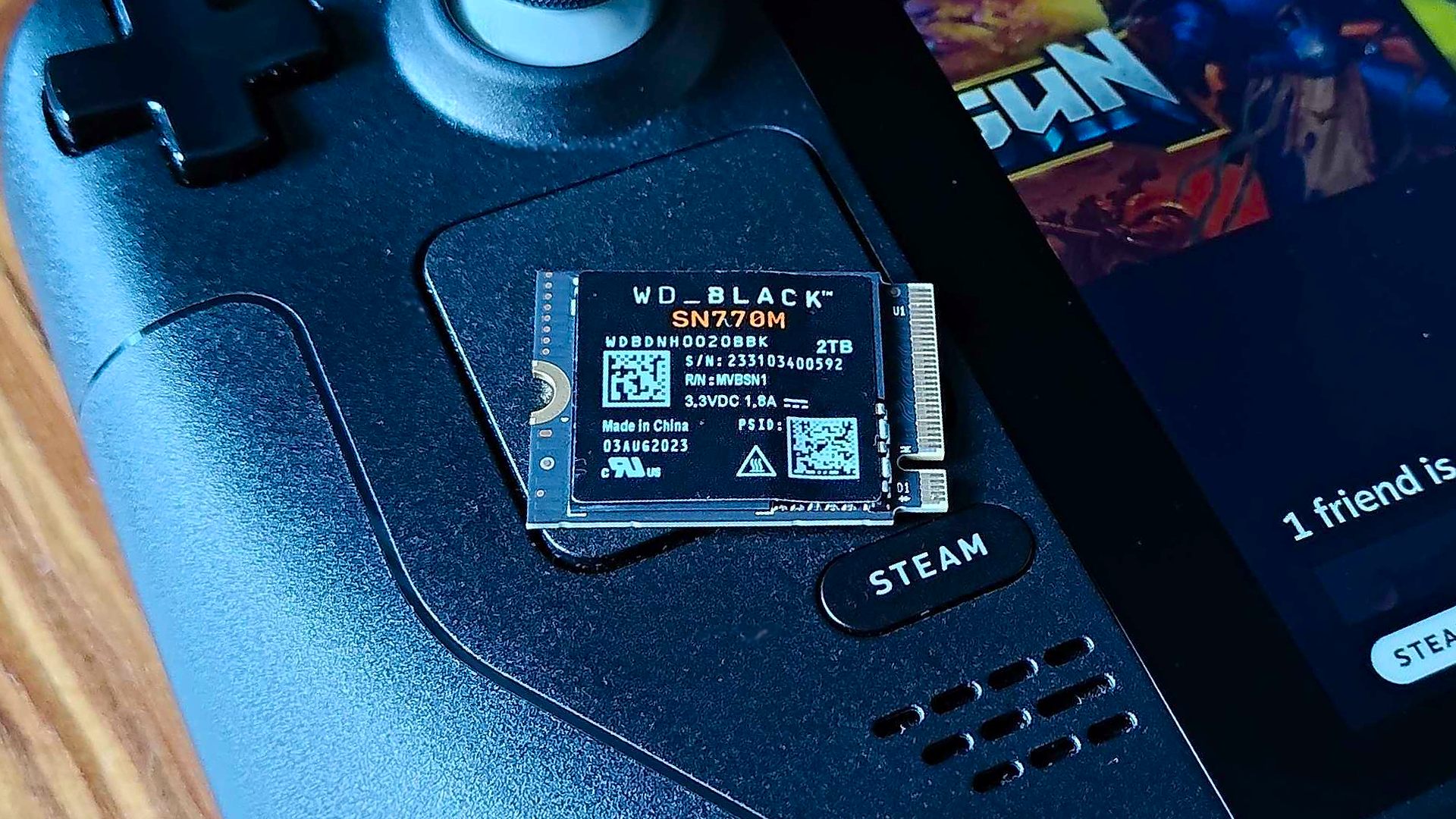
Should you buy the WD Black SN770M?
It’s pretty expensive, but the WD Black SN770M serves as a reliable way to upgrade your Steam Deck SSD. Most players will likely be tempted to stick with cheaper 512GB and 1TB versions of the drive, especially when it comes to upgrading the lower capacity models of Valve’s portable. However, if you’ve got a massive Steam library with plenty of adventures beginning to be played on the go, the 2TB option is going to make a massive difference.
That said, I do feel like players with PCIe Gen 4 compatible devices are going to get more mileage out of the SN770M. That fact would normally prompt me to point you towards cheaper Gen 3 drives instead, but there’s not actually much to choose from out there by reliable brands. So, providing you can get one for less than MSRP, I’d still feel inclined to pick up WD Black’s 2230 SSD over other budget contenders bearing unfamiliar logos.
How I tested the WD Black SN770M
To put the WD Black SN770M to the test, I used the 2TB version to upgrade my Steam Deck LCD 512GB model. During installation, I assessed the build quality and design of the drive to check whether it affected the experience, while considering ways that Western Digital could contribute to the specific use case.
Once installed, I installed a bunch of games onto the WD Black SN770M within my Steam Deck, including Cyberpunk 2077 and Baldur’s Gate 3, which helped me check speed impressions during general use. To generate benchmark figures, I downloaded and installed KDiskMark using desktop mode and compared read/write speeds to the new Steam Deck OLED model.
To learn more about how we test SSDs and other components, swing by our GamesRadar+ Hardware Policy for a full rundown.
Looking for console flavored storage options? Check out the best PS5 SSD and best Xbox Series X hard drive for more options. We've also got you covered with the best external hard drive for gaming if you need something more portable.

I’ve been messing around with PCs, video game consoles, and tech since before I could speak. Don’t get me wrong, I kickstarted my relationship with technology by jamming a Hot Wheels double-decker bus into my parent’s VCR, but we all have to start somewhere. I even somehow managed to become a walking, talking buyer’s guide at my teenage supermarket job, which helped me accept my career fate. So, rather than try to realise my musician dreams, or see out my University degree, I started running my own retro pop culture site and writing about video games and tech for the likes of TechRadar, The Daily Star, and the BBC before eventually ending up with a job covering graphics card shenanigans at PCGamesN. Now, I’m your friendly neighbourhood Hardware Editor at GamesRadar, and it’s my job to make sure you can kick butt in all your favourite games using the best gaming hardware, whether you’re a sucker for handhelds like the Steam Deck and Nintendo Switch or a hardcore gaming PC enthusiast.



